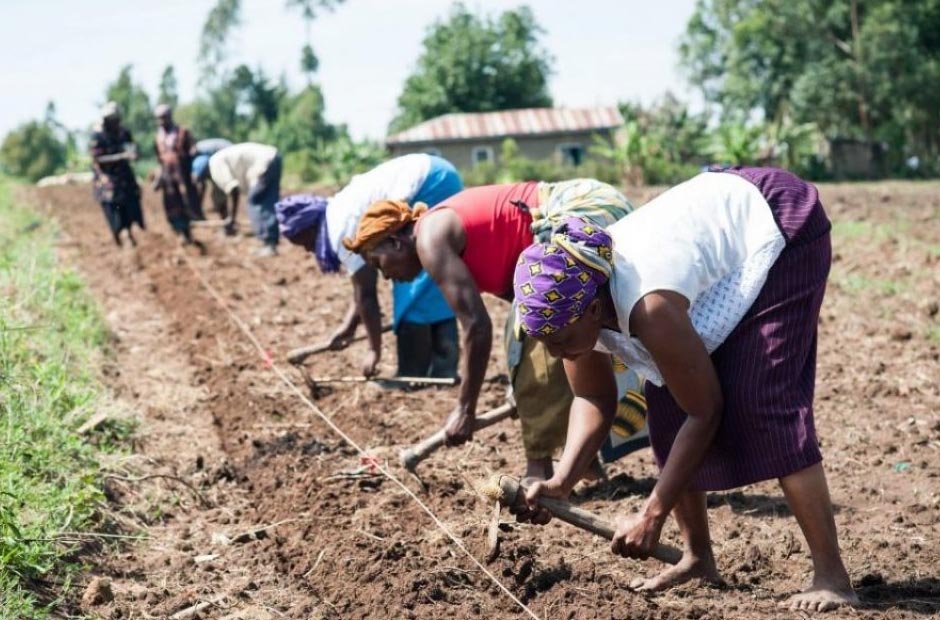In a world grappling with the twin crises of climate change and food security, the quest for sustainable farming practices is not just commendable but imperative. As our planet teeters on the brink of environmental thresholds, the agricultural sector stands at the forefront of the battle, armed with innovative technologies and methods that promise a greener, more bountiful future. Let’s explore six groundbreaking innovations that are setting the stage for a revolution in sustainable farming.
Precision Agriculture: The High-Tech Farming Frontier
Imagine farming where every drop of water, every grain of fertilizer, and every square inch of soil is optimized for maximum productivity and minimal waste. Welcome to precision agriculture, a practice that harnesses the power of GPS, IoT devices, and drones to usher in an era of farming that is not just efficient but truly intelligent. These technologies allow farmers to monitor crop health, and soil conditions and even predict weather patterns, enabling precise adjustments to their cultivation practices. The result? Higher yields, lower environmental impacts, and a significant step towards food security.
This approach not only supports sustainable agriculture but also empowers farmers with data-driven insights to make informed decisions. Precision agriculture is reshaping the agricultural landscape, turning traditional practices into a modern science. It’s a testament to how innovation can drive sustainability while ensuring food production meets the growing global demand. By reducing waste and enhancing productivity, precision agriculture stands as a pillar of sustainable farming in the 21st century.
Vertical Farming: Sky-high Potential
Space is a luxury in urban areas, a fact that vertical farming has turned into a virtue. By stacking crops in layered systems, often in controlled environments like greenhouses or indoor farms, vertical farming defies traditional agriculture’s spatial constraints. This method is not only water and land-efficient but also slashes transportation emissions by bringing food production closer to consumers. The fresh, pesticide-free produce that comes out of these vertical farms is a testament to how technology can bring us closer to sustainability. It offers a solution to the challenge of feeding urban populations, where space is scarce and demand is high. Vertical farming is a beacon of innovation, demonstrating that sustainable practices can coexist with urban development. It also serves as a model for resilience, with its ability to withstand extreme weather conditions and climate change impacts. As cities continue to grow, vertical farming will play a crucial role in shaping sustainable urban food systems.
Mobile Range Coops in Poultry Farming: Freedom on Wheels
Poultry farming is undergoing a quiet revolution with the adoption of mobile range coops. These movable structures offer poultry not just protection but the freedom to forage, resulting in healthier birds and more nutritious eggs and meat. The benefits extend beyond animal welfare, as the coops can be rotated across fields, naturally fertilizing the soil and reducing the need for chemical inputs. This integration of poultry farming into the broader ecosystem underscores the potential for sustainable practices to improve animal welfare and environmental health simultaneously. The mobility of these coops embodies a dynamic approach to farming, one that respects the rhythms of nature and the needs of the animals. It’s a practice that not only enhances the quality of poultry products but also contributes to the regeneration of the land. Farmers utilizing mobile range coops often report not just healthier birds, but also an improvement in soil health and crop yields. This innovation in poultry farming is a clear example of how sustainable practices can create win-win situations for farmers, animals, and the environment.
Agroforestry: A Union of Agriculture and Forestry
Agroforestry is a nod to the ancient wisdom that sees trees as allies to crops and livestock. By integrating trees into farming landscapes, agroforestry practices enhance biodiversity, improve soil health, and sequester carbon, addressing some of the most pressing environmental issues of our time. Whether it’s providing shade for cattle, nitrogen fixation for crops, or habitat for wildlife, the trees in these systems play multifaceted roles that underline the interconnectedness of nature and agriculture. Agroforestry not only bridges the gap between agriculture and conservation but also offers a sustainable livelihood for farmers. It stands as a testament to the power of combining traditional knowledge with modern sustainability goals. By diversifying farm incomes and providing ecosystem services, agroforestry is a cornerstone of resilient agricultural systems. Its practice across the globe demonstrates its adaptability to different climates and cultures, making it a universal tool for sustainable development.
Aquaponics and Hydroponics: Water-wise Farming
In a world where water scarcity looms large, aquaponics and hydroponics offer a beacon of hope. These innovative farming techniques eliminate the need for soil, significantly reducing water usage and the need for chemical fertilizers. Aquaponics combines fish farming with plant cultivation, recycling fish waste as nutrients for plants, which in turn purifies the water for the fish. Hydroponics, on the other hand, involves growing plants in nutrient-rich water solutions. Both systems highlight the efficiency of closed-loop agriculture, where waste is not a byproduct but a resource. They represent a leap towards sustainability, addressing the critical issue of water use in agriculture. By allowing for dense, scalable farming, these systems can feed more people with fewer resources. Aquaponics and hydroponics are not just farming methods; they are visions of the future where efficiency and sustainability go hand in hand.
Biopesticides and Biological Pest Control: Nature’s Own Defense Mechanism
The move towards biopesticides and biological pest control is a testament to agriculture’s shift from chemical reliance to ecological harmony. By utilizing natural organisms or substances, these methods offer a way to combat pests without the collateral damage to the environment and human health associated with chemical pesticides. Whether it’s bacteria that target specific pests or plants that naturally repel unwanted insects, biological pest control illustrates nature’s prowess in providing solutions to its challenges. This shift is crucial in reducing the toxic load on our ecosystems and promoting biodiversity. It exemplifies a growing recognition of the importance of working with nature rather than against it. Farmers embracing these methods find not only an ally in pest management but also a partner in achieving long-term sustainability. The adoption of biopesticides and biological pest control marks a pivotal moment in agriculture, steering it towards a future where the health of the planet is as important as yield. By fostering ecosystems that are resilient to pests and diseases, these methods contribute to the stability and sustainability of food production systems worldwide.
Conclusion
The journey toward sustainable farming is filled with innovation, creativity, and an unwavering commitment to the planet and its inhabitants. The six innovations discussed here represent just the tip of the iceberg in the vast ocean of possibilities that sustainable farming holds. As farmers, researchers, and policymakers continue to explore and adopt these practices, the vision of a world where agriculture contributes to environmental health becomes ever more achievable. It’s a world worth striving for, don’t you think? Through the continued adoption and advancement of these innovations, we can look forward to a future where sustainable farming is not the exception but the norm. A future where our food systems are in harmony with nature, ensuring the well-being of the Earth and all its inhabitants for generations to come. This is the future that sustainable farming innovations are helping to build—a future filled with hope, resilience, and abundance.
















